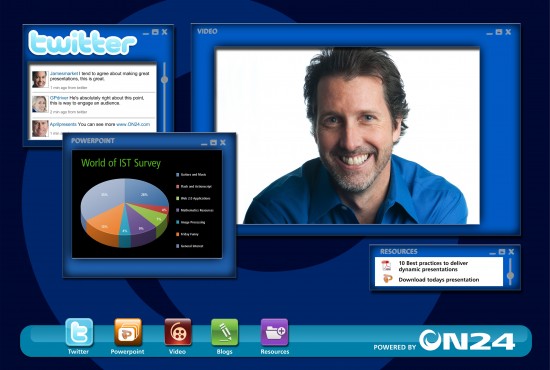Webcasting is seen by many professionals as an ideal marketing and communications tool, offering the effectiveness and efficiency that enterprises require in today’s business environment. These best practices can help you easily run a successful webcast.
Maximizing Registration Rates
- Timing. Avoid Mondays and Fridays, as these are peak meeting days and webcast attendance is therefore often lower. According to a leading industry analyst, the best time of the day is 1 pm Eastern Time, as this also accommodates attendees on the West Coast. Webcast platform provider ON24 reports that most of their webcasts are hosted between 11 am ET and 3 pm ET.
- Tell your “friends.â€Â Experts agree that about 70 percent of all virtual event registrations are the result of promoting to internal lists.
Maximizing Attendance
- Give yourself plenty of time for planning and execution. Start the process at least four weeks before the webcast, focusing on these activities: development of a compelling topic; identification of presenters and the target audience; and a promotional outreach campaign.
- Send reminder emails. The recommended best practice is to send two—the first reminder one week ahead of time and a second reminder the day before the webcast.
Maximizing Engagement
Factors such as event timing and length do not significantly impact interest and engagement. The key to truly engaging attendees is to develop and offer interesting, compelling and educational content. If content is boring or does not bring relevant value, you will lose your attendees. Inviting an industry expert, customer or partner to present a case study or host a Q&A during a webcast can be highly effective, as this stimulates more interest and helps drive participation. Integration with social media such as Twitter and LinkedIn does as well.
Maximizing Impact and ROI
- Match your messages to your audience. Understand the interests of your registrants; doing so provides great insight into the audience’s priorities. This information can then be used to tailor presentations and other content to the audience’s needs and level of expertise and to qualify participants.
- Fully leverage virtual reporting tools. One of the biggest advantages of a webcast is the reporting tools that are available. In addition, take advantage of other opportunities to collect analytical data by, for example, soliciting participants’ feedback after the webcast.
- Virtual event best practices - September 8, 2010

